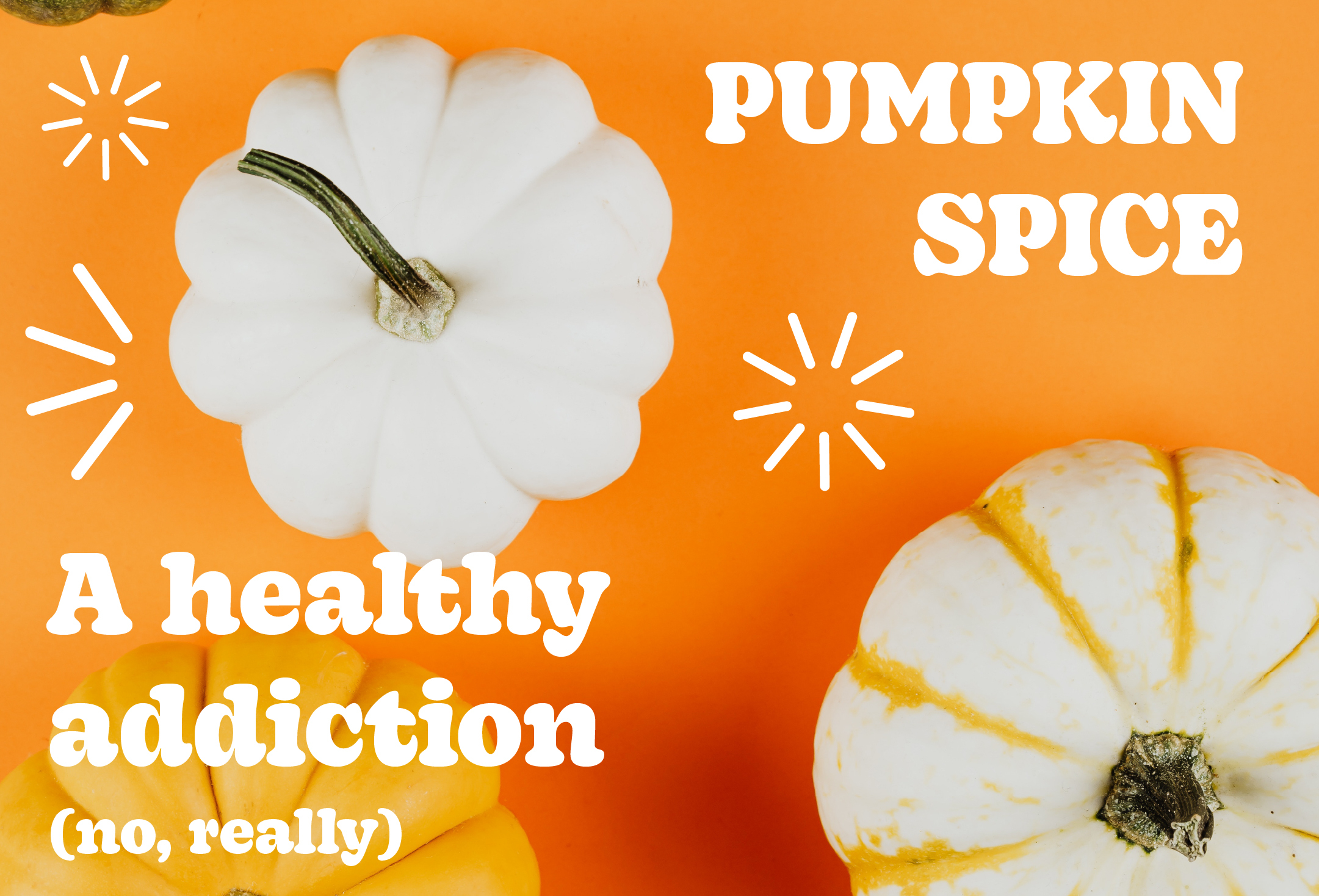
It’s a recurring welcome-to-fall tradition.
Pumpkin spice EVERYTHING.
And whether you’re the type to jump in like a fresh pile of leaves and buy it all, or turn your nose and start counting down the days to Christmas, pumpkin spice has some amazing health benefits that might surprise even the most pumpkin-headed skeptics.
Originally intended for seasoning pumpkin pie, this uniquely nostalgic spice blend has been around for at least 225 years. And we’ve figured out how to add it to all kinds of things!
But the individual ingredients that make up pumpkin spice have been around much longer and have been used throughout time to benefit people’s health. Let’s break down the spice.
- Pumpkin: These favorite decorative squashes are packed with vitamins, minerals, and antioxidants while also being low in calories. Their yellow/orangey color means that, like their orange counterparts, carrots, they’re full of carotenoids, or beta carotene, which our bodies convert into vitamin A to fight infections, and keep our vision sharp. According to Kerri-Ann Jennings, MS, RD, the nutrients and antioxidants in pumpkins may also “boost your immune systems… lower your risk of certain cancers, and promote heart and skin health.”
- Cinnamon: This most famous of spices comes from the inner bark of the cinnamon tree, or Cinnamomum, and has been used as a food ingredient as far back as Ancient Egypt, where it was also prized as a gift fit for kings. Cinnamon is a super-antioxidant, has powerful anti-inflammatory properties, and may lower the risks of heart disease. It can also lower blood sugar levels, help fight bacterial and fungal infections, protect against certain cancers, and more! But cinnamon’s ability to make regular dough into a cinnamon roll might arguably be its greatest superpower.
- Nutmeg: Nutmeg is a popular fall spice, which is why it’s surprising to know that it’s made from the seeds of a tropical evergreen tree native to Indonesia. Among its valuable health benefits, nutmeg acts as an antioxidant, is anti-inflammatory, has antibacterial properties, may benefit heart health, blood sugar levels, and even boost your mood.
- Ginger: If you’ve ever eaten at a sushi restaurant, you’ve probably been served a small side of raw ginger as a spicy palate cleanser. Ginger is native to Asia, the root of the Zingiber officinale plant, and features in cuisine around the world, but it does a lot more than taste delicious. Ginger is great for battling nausea (ginger ale on the airplane, anyone?), soothing sore muscles and arthritis, curbing the growth of some cancers, lowering blood sugar and cholesterol, relieving indigestion, and fighting off germs, even keeping bacteria like E.coli, shigella, and RSV at bay.
- Allspice: Fruit from the pimento tree is picked and left out in the sun to dry and harden into a brown berry that, when ground, tastes like a mixture of cinnamon, cloves, and nutmeg, which is why it’s called allspice. This powerful spice is used in both sweet and savory dishes and boasts some impressive health benefits such as anti-inflammatory qualities, aiding digestion, boosting immunity, improving blood circulation, dental health, and relieving symptoms of arthritis, gout, muscle aches, and more.
- Cloves: Cloves are the flower buds from the evergreen clove tree and are a spicy, warm, versatile addition to all kinds of dishes, from pot roasts to cookies, to hot beverages. The most notable benefits of eating cloves include protection against some types of cancers, antioxidant qualities, antimicrobial properties, improving liver health, regulating blood sugar, promoting bone health, and reducing stomach ulcers. But some of us will always remember our grandmothers pressing whole cloves like pins into the rind of an orange and hanging it in the house for an all-natural fall-inspired amazingly-scented decoration.
While we’ve mainly focused on the physical health benefits of pumpkin spice, there is a mental health connection that may hold an even stronger explanation as to why we cling so strongly to this annual fall tradition. According to Cedars-Sinai Blog contributor Andrea Soung, “The recurring pumpkin-spice-everything tradition we have in the U.S. may get a little old at times, but the theme running through shops and homes transitioning to the fall season and anticipating the holidays rekindles past experiences and builds community. After all, even smell is connected to memories—and for most people, pumpkin spice brings warm and fond memories.”
This might explain the mass migration to a Starbucks drive-thru line near you. Their pumpkin spice latte is so popular it’s garnered its own acronym, the PSL. And every year, fans herald its return to the menu.
So, there you have it. A reason to re-fall-in-love with pumpkin spice (as if you really needed one). Now, granted, as your health insurance guide we must say that adding a sprinkling of these spices to a sugar-heavy dessert isn’t the healthiest way to use them, even if it is the tastiest, but with a little recipe exploration, we can find new ways to add these impressive little health foods into our regular diets. That way, pumpkin spice can last all year long.

